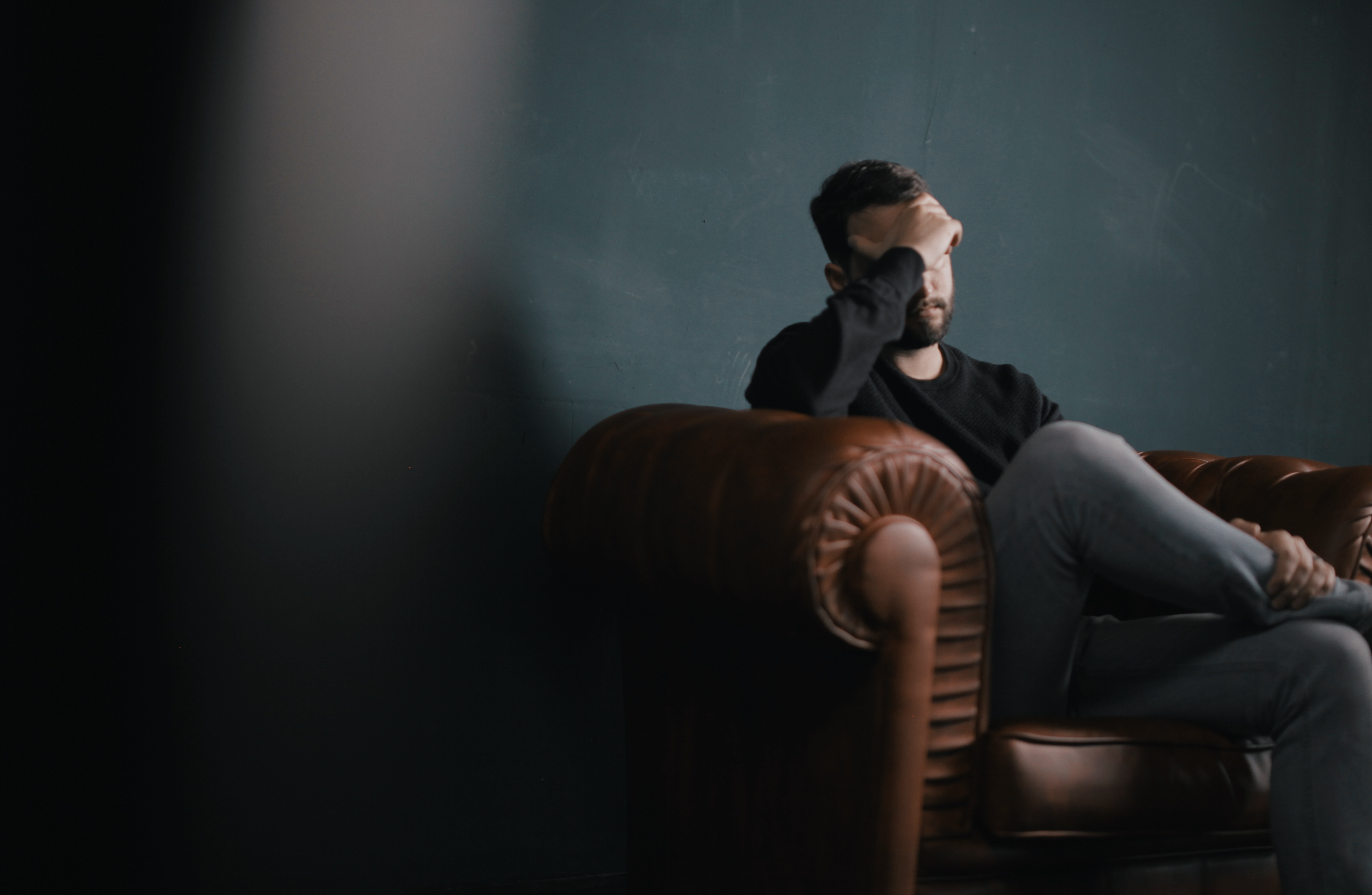The very first and most obvious step when it comes to overcoming depression is to understand it and accept the fact that depression is a real illness.
What is Depression?
Depression or Major Depressive Disorder or clinical depression is a serious but a prevalent medical illness that has adverse effects on the way you feel about yourself and others, the way you think and the manner in which you act. There may have been a time when going to a particular place would make you happy from the inside, irrespective of what your mood or emotional state was. The very same place might fail to cheer you up when you feel depressed.
Depression doesn’t only change the way you feel about a person or a place; it has the potential to affect you physically and drastically reduce your ability to carry out the most basic functions – be it at home, school or at work. Sleeping, eating and working can become tasks that you will not enjoy let alone get through in the usual manner.
Types of Depressions:
Like every other medical condition out there, depression too comes in various kinds that may develop under unique and varied circumstances. The most common ones are – Persistent Depressive Disorder (Dysthymia), Perinatal Depression, Psychotic Depression, Seasonal affective disorder and Bipolar Disorder. It is fundamental to remember that the types are purely subjective to the person and may vary from person to person.
1. Persistent Depressive Disorder:
Dysthymia, as it’s commonly called in the medical profession, is usually diagnosed after the depressed mood has lasted for at least two years. A patient diagnosed with Persistent Depressive Disorder usually exhibits episodes of major depression, accompanied by periods of symptoms which are not as severe. However, symptoms normally last for a minimum of two years.
These symptoms may include apathy, anti-social behavior or even wanting to be alone. They may also include personal neglect.
Symptoms
Persistent depressive disorder (PDS) symptoms come and go over a period of years, and their intensity can vary with time. However, typical symptoms do not disappear for a little over two months at a time. In addition to the recurrent symptoms, there are chances of prominent depression incidences occurring during or before persistent depressive disorder. This illness is also called double depression.
Some common indicators of PDS can cause substantial impairment. Some of them are:
● Disinterested in getting through daily activities
● Feeling sad, empty and feeling down all the time
● Feeling futile
● Constantly tired and lacking in energy
● Immensely low self-esteem, negative self-critique increases, feeling incapable of completing tasks that you were once good at
● Concentration and decision-making abilities are hampered
● The feeling of being irritated all the time or just feeling angry without any reason
● Decrease in effectiveness and productivity
● Saying no to social activities
● Guilt and past regrets loom over you
● You either start eating too little or overeat
● Sleep deprivation
These symptoms have now become a part of the individual’s day- to-day experience. These are emotions one is bound to express, particularly in the case of early onset – e.g., “I have always been this way.” When it comes to children and teens, the general mood to look out for will be ‘irritable’ instead of feeling depressed, and it usually lasts for at least a year.
Parents often fail to notice it or pay heed to it stating, “It’s a phase, it will pass.” This is one of the reasons they may not have seen – let alone reported – these symptoms to a doctor. It takes a keen eye to recognize these symptoms as symptoms and not the newly accepted teen way of life. However, there may be external influencers such as an individual who is constantly around you and notices the changes in you and probes you to receive help.
To meet the indicative criterion of dysthymic disorder, the symptoms could be a result of the direct or impending physiological effects of abuse of any substance (e.g., alcohol, drugs or medications) or even a common general medical condition (e.g., cancer or a stroke). These symptoms will also be the reason for significant distress or the impairment of social, educational or even occupational areas of day-to-day activities.
It is scary to think about how these symptoms are there right in front of us. They can be exhibited by potentially anyone; from the person you love the most to yourself. Being aware of these symptoms will help to identify the right moment to reach out for a skilled professional hand.
Talk to the doctor of your choice about your symptoms – preferably a doctor who knows your medical history or a doctor you are comfortable sharing your information with. You can also seek an appointment directly with a mental health provider; trust me, there is no shame in it. What you are doing is one of the bravest things you can do.
This fantastic decision will certainly change your life. If you are still disinclined towards seeking help directly from a mental health professional, reach out to someone else! Help can be sought out from someone who you think will be able to guide you in the right direction. The right direction, in this case, is certainly treatment; though, you could very well confide in a friend or a loved one, a teacher, a faith leader, a colleague or anyone you trust.
To identify and treat it, it’s important to understand what the causes could potentially be. However, it is important to know that the reasons can vary from individual to individual. Clinically, the precise cause for PDS is still not known.
Causes
Here are some of the commonly recorded causes:
Life Events
Just like every other form of depression, Persistent Depressive Disorder is highly likely to be due to traumatic incidents that have occurred in the recent or even the distant past. Events such as
losing a loved one, continuous financial problems or even a high- stress demanding job or social environment can very easily trigger Persistent Depressive Disorder.
Inherited Traits
The concept of inheritance is an amazing phenomenon. It has its flip side too; Persistent Depressive Disorder is one of those conditions that can be genetically passed on to any offspring. However, researchers are yet to isolate the gene that might be involved in causing and passing on depression. If you have close relatives who have suffered from depression, your doctor should be made aware of this.
The Chemistry in the Brain
The human brain is a repository of neurons and neurotransmitters that are naturally occurring brain chemicals. A chemical imbalance in the brain can play a significant role in triggering depression. According to recent research, the neuro- circuits are responsible for the stability of the moods and how they work. Depression indicates changes in the function of the neurotransmitters and it is this change that causes depression. This research was responsible for developing a way depression can be treated by targeting specific neuro-circuits.
Physical medical conditions
As much as depression is classified as a mental condition, there are physical illnesses that people suffer from that may also be the cause of the depression that is experienced. Physical brain trauma, a concussion is a good example, chronic physical illnesses like diabetes and heart disease can prove to be the causes of Persistent Depression Disorder in some cases.
2. Perinatal Depression
This type of depression is commonly seen in new mothers. Becoming a mother is considered as one of the biggest joys in the world. However, with this great joy comes a bundle of emotions, ranging from excitement to fear, to stress and even apprehension. The physical changes new mothers go through can vastly affect the mood and feelings.
Yes, it is common to experience mood swings but, in this case, Perinatal Depression is not just a ‘low mood.’ It is a serious condition, which doesn’t just affect the person suffering from Perinatal Depression, but also the people who are close to that person. It can hamper the relationships you share and cherish and also play a huge role in disrupting the healthy development of your child.
When it comes to new mothers, it becomes essential to know the difference between ‘baby blues’ and Perinatal Depression. Baby blues or mood swings a new mother experiences usually begin between the third day and the tenth-day post birth. You might feel a bit tearful at the most bizarre times or even overwhelmed by the simplest of things. This usually passes within a few days and without it being treated specifically. The only care that needs to be received during this phase is the support and understanding of the ones around you.
All parents go through a period when they take their time to adjust to the drastic new changes life has presented to them. The thing to remember here is that you are not the only parent who is trying to figure out how to calm a crying baby or just trying to get it to sleep. Every parent faces the same challenges. Certain parents take longer than others to adapt. It’s a learning process for the parents as much as it is for the kid. Perinatal Depression falls into the picture only when the mood swings persist and there is a feeling of being distressed, feeling down or sad and being overwhelmed most of the time. This can sometimes stretch over to two weeks or even longer in certain cases.
Symptoms
The persistent symptoms of perinatal depression can be broken down into categories to keep an eye out for. The symptoms to look out for include:
● Watch the mood for recurring anger, anxiety, general discontent with self and others, constant guilt, the feeling of hopelessness, loneliness despite being surrounded by loved ones, loss of interest or pleasure in day to day activities, drastic mood swings and panic attacks as well as unexplained sadness.
● Has the behavior changed to any of these?–Starts to cry more than usual, easily irritable, restlessness prevails, or has the constant need for social isolation.
● No more beauty sleep? – Insomnia has struck, waking up to constant nightmares, or being deprived of sleep entirely.
● Have the cognitive abilities become hampered? – Concentration becomes a problem; undergoes thought process disorder or negative unwanted thoughts keep looming constantly.
● Psychological health – General increase in fear; specifically – the fear of trying new things, and repeated over thinking.
● Fit body, fit mind – constant fatigue or loss of appetite, sudden weight loss or weight gain.
The exact causes of Perinatal Depression are yet to be identified. The common triggers for this type of depression can include a past history of mental illness, stressful life events – past or present, depression during the time of pregnancy, a bad or a non- existent marital relationship, few or no support systems during the time of child birth and sometimes poverty too.
There is a pattern that is at play here with the causes if you are keen enough to read between the lines. Though a medical professional’s help is required during these times, it becomes a mandate to seek and offer support if you think you are exhibiting any of these symptoms or someone you know is. Catching depression early can go a long way with the health of not just the mother, but her child as well.
3. Psychotic Depression
Have you ever had those delusional thoughts when you think you are feeling down? The next thing may seem haunting. Do you hear or see upsetting things that are not heard and seen by others? Having either of these delusions and hallucinations will mean that you are potentially suffering from Psychotic Depression.
The first thing to be evident if you are suffering from this form of depression or if someone you know is, the patient will display a sense of disconnection with reality. It is considered to be one of the sub types of major depression. Psychotic depression is induced by depression when accompanied by some form of psychosis. The psychosis could be the delusions – such as having a feeling that you have committed a sin, you start believing you are a failure and have intense feelings of worthlessness. The hallucinations in certain cases are worse and can cause more harm to the person suffering from Psychotic Depression. The hallucinations are usually accompanied by voices in the head. Psychotic Depression affects roughly one out of every four people admitted to the hospital for depression.
Symptoms:
Delusions and hallucinations are the first and the clearest signs that you might be suffering from Psychotic Depression. Close to half the patients with this form of depression experience more than one kind of delusion. Hallucination free delusions can also occur. In fact, it occurs in one-half or two-thirds of patients with psychotic depression. Some of the other symptoms include:
● Anxiety
● Hypochondria
● Agitated state of mind
● Insomnia
● Impairment of the intellect
● Physical Immobility
● Constipation
With the kinds of depressions you have read about so far, psychotic depression is considered to be the most frightening of the lot. What causes this scary depression? It has been noticed that the victims of psychotic depression are usually the ones who have had multiple episodes of depression earlier in their lives without psychosis. It is like a collective aftermath of multiple depression episodes.
Normally, when someone is undergoing recession, it is advised that they seek help and talk to people they trust. However, in this particular type, the chances of family members suffering from Psychotic Depression get exponentially high when a member of the family is already a patient. Times like these call for a trained professional who can help you walk away from this. Remember, every type of depression is curable.
4. Seasonal Affective Disorder:
This is a peculiar one. With what you have read so far, it depends on what you classify as peculiar or strange. Seasonal affective disorder is what its name suggests. It is seasonal depression, which is nothing but depression that visits you like clockwork. If you fall under the bracket most of the seasonal affective disorder patients fall under, you will notice your symptoms generally start somewhere during the fall and continue to grow until the winter. Just like the mood that surrounds these seasons, your mood falls, and your energy is sapped. However, there have been cases recorded where the depression starts early spring or summer.
Often confused with the ‘winter blues,’ the first reaction to these feelings is to sideline and ignore them, blaming the winter. “Oh, it’s the weather that is making me gloomy.” The gloomy package you receive seasonally is giving you a sign; a sign where you make sure you find things to do that are therapeutic and that make you feel better.
Symptoms:
This gloomy package is one to watch out for, especially if you are seasonally prone. Look out for these signs to understand and recognize Seasonal Affective Disorder.
● The feeling of hopelessness and worthlessness ● Suicidal thoughts
● Loss of interest in activities
● Social interaction withdrawal
● Appetite and sleep disorders
● Challenges in concentrating and making decisions ● Decreased sex drive
● Constant complaints of fatigue
● Agitation
The symptoms may be similar to those of other types of depression. The key to look out for is to notice if these symptoms occur periodically or seasonally to be specific. While this is technically the least dangerous type of depression, Seasonal Affective Disorder should not be disregarded. Seek help, no matter how small or silly the reason might seem to you. You don’t have to put up with it. You may find that a simple blood test will tell your doctor what deficiencies you are suffering from and you may be able to adjust your activities and your supplements to make things better.
How different is depression from feeling down or sad?
With the knowledge of the major kinds of depression and their symptoms, it is time to understand the difference between actual depression and a ‘sad feeling.’ You might be sipping a cup of coffee in your favorite spot and you think about something that fills the air with absolute sadness.
Your perspective of the entire place has now changed. What was a nice relaxing cup of coffee has now been ruined by this dark empty sadness that has crept in. Is this depression or a sign of it? Or is it just an emotion that was triggered by something that reminded you of an event or a person that is unpleasant? If it is the latter, it is just sadness which is nothing but a normal human emotion. It will pass in a few hours or days based on how strongly you feel about it, and you will go back being your dandy self.
Depression, on the other hand, is an abnormal and caused state that affects the way you think, act and react to things and people around you. When you are sad, you are not depressed. But, when you are depressed, you are sad about everything.
There are enough triggers that can cause depression without it being a difficult event to put your finger on. A loss of someone or something and even stress can cause depression. Sadness or any other such emotion, on the other hand, needs to have a trigger to kick-start the feeling within you. If what you are feeling is truly only sadness or a negative emotion, the fix for it is going to be relatively simple compared to fixing depression.
Step 1: Understanding Depression | Step 2: The Psychological and Physiological Effects of Depression | Step 3: The Science and Statics of Depression






